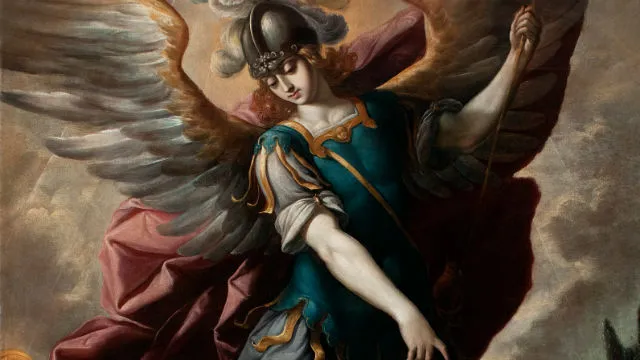
Pope Leo XIII, who reigned from 1878 to 1903, is closely associated with the Saint Michael Prayer, which he composed in 1886 after a mystical vision, urging its use to combat spiritual evil in a modernizing world.
Born Vincenzo Gioacchino Pecci in 1810, Pope Leo XIII served as pontiff from 1878 until his death in 1903, one of the longest papacies in history. He was a forward-thinking leader known for addressing modernity through works like Rerum Novarum and his spiritual initiatives, including the Saint Michael Prayer.
The Saint Michael Prayer is a supplication to St. Michael the Archangel, asking for his protection against “the wickedness and snares of the devil.” Composed by Pope Leo XIII, it reflects a call for divine defense in an age he perceived as spiritually threatened.
Tradition holds that on October 13, 1884, after celebrating Mass, Leo XIII had a vision of Satan challenging God and threatening the Church, followed by St. Michael’s triumph. Shaken by this, he composed the prayer in 1886 and mandated its recitation after Low Mass to safeguard the faithful from evil forces.
The prayer reads: “Saint Michael the Archangel, defend us in battle. Be our protection against the wickedness and snares of the devil; may God rebuke him, we humbly pray; and do thou, O Prince of the heavenly host, by the power of God, cast into hell Satan and all the evil spirits who prowl about the world seeking the ruin of souls. Amen.” It’s a concise yet powerful invocation rooted in biblical imagery of spiritual warfare.
In the late 19th century, Europe faced rapid secularization, industrialization, and ideological shifts like socialism and atheism, which Leo XIII saw as threats to Christian faith. His vision and the prayer emerged during this turbulent time, reflecting his concern over a perceived rise in spiritual and moral dangers.
In 1886, Leo XIII ordered the prayer to be recited after Low Mass as part of the “Leonine Prayers,” a practice that continued until the liturgical reforms of Vatican II in 1964 ended its mandatory use. It became a symbol of spiritual resistance, widely embraced by clergy and laity alike to invoke St. Michael’s protection.
For Leo XIII, the prayer was a weapon in spiritual warfare, reflecting his belief that the modern world was under assault by demonic forces, as suggested by his vision. It complemented his broader efforts—like promoting the Rosary—to fortify Catholic devotion against secularism. He saw St. Michael as a defender of the Church in an era of upheaval.
The Saint Michael Prayer aligns with Leo XIII’s focus on spiritual renewal, seen in his 11 Rosary encyclicals, such as Supremi Apostolatus Officio (1883), and his intellectual efforts like Aeterni Patris. While Rerum Novarum addressed social justice, the prayer tackled the spiritual dimension of his papacy’s mission to confront modernity’s challenges holistically.
Though no longer mandatory after Mass, the prayer regained popularity in recent decades, with Pope John Paul II and Pope Francis encouraging its use amid contemporary crises. It remains a potent symbol of spiritual defense, recited in parishes, homes, and exorcisms, preserving Leo XIII’s vision of St. Michael as a guardian. Its revival reflects ongoing Catholic concerns about evil in the modern world.
Leo XIII’s authorship of the Saint Michael Prayer underscores his deep spirituality and proactive stance against the perceived threats of his era, blending mysticism with leadership. The vision that inspired it—whether historical or legendary—highlights his acute awareness of the Church’s battle beyond the material realm. Its enduring use ties his legacy to a timeless call for divine protection, complementing his intellectual and social contributions. This connection showcases a pope who addressed both the seen and unseen struggles of his time. It remains a testament to his multifaceted approach to guiding the Church through modernity.